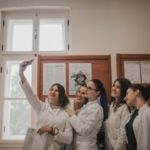- Upisi
- Studijski programi
- Studenti
- Raspored i grupe
- Ispitni rokovi i termini konzultacija
- Studentski zbor
- Udruga ZOA
- Studenti u znanosti
- Dokumenti
- ISSP & ISAK
- Webmail
- AAI@EduHr
- Promocija studenata
- Literatura
- Dodatni sadržaji
- Znanost
- Kvaliteta
- Međunarodna suradnja
- Karijere
- Alumni
- Biolog-i-ja
- O nama
- Cjeloživotno obrazovanje
- Mrežna trgovina
- ENG

- Arhiva














